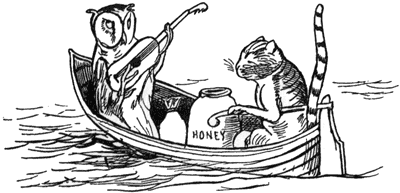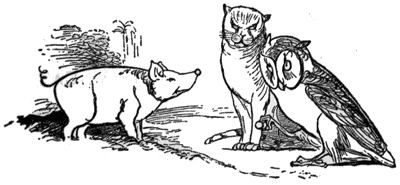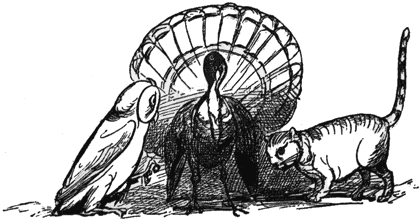Friday wol is diverse and random
Hooray, working at home today! Clearly it's time for a celebratory wol. We haven't had one in weeks, so let's have two.
- Courtesy of Confluency and a diverse trail of re-tweets, How to draw an owl. Amusingly cynical, and a lovely drawing.
- Edward Lear. I teach nonsense poetry to my second-year class, largely to their bemused bafflement, but I persevere on the grounds that everyone needs a Jumblie sooner or later, and besides, you can slide Saussure and signification in under the guise of nonsense theory. Recent interesting class discussions have revolved around "The Owl and the Pussycat", and oh my god I had to type that four times before it was anything other than "The Wol and the Pussycat", which is a drastically anachronistic mixing of kiddielit paradigms.
I love this piece of poetry - it has a gentle, whimsical, dreamy rhythm which I remember from my parents reciting it to me, and which I rediscovered with huge joy when I could barely read. But, leaving aside all the weirdness of inter-species marriage between predators, have you ever noticed how strangely subversive the gender roles are in the story? Particularly given the stereotypes of Victorian sexual identity - dominant male, submissive female - it's quite iconoclastic that the owl and the cat are never definitively gendered, and their roles and depictions shift all over the show.
The owl's initial role seems masculine, the troubador who sings courtly-style love-songs to the cat while accompanying itself on "a small guitar"; the cat is "beautiful". But if you look at the first drawing:

- the cat is quite dominantly in control of the boat, and that tail is oddly phallic. In the next verse the owl is "elegant" and its singing "charmingly sweet", both of which represent feminine qualities in the average Victorian register, so the genders have flipped. The artwork echoes the flip: in the second picture the cat remains dominant, taller and sterner-looking and with big masculine chest, although oddly it's the shorter owl with its head bowed which offers the ring, reversing the usual marriage ceremony roles:

In the third the roles are reversed again, taller/dominant "male" owl and slightly submissive-looking "female" cat:

The final, haunting image of unity - "hand in hand, on the edge of the sand, they danced by the light of the moon" - is thus peculiarly subversive of Victorian gender identities, power relationships and sexual orientations. These creatures could be anything. The point is that they're happy together. Hooray for Edward Lear and queer theory wols!